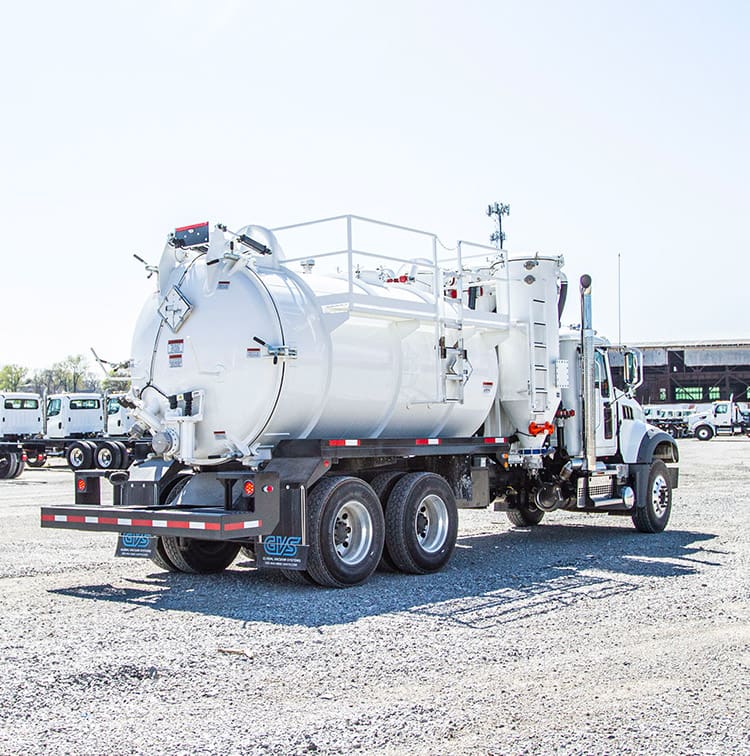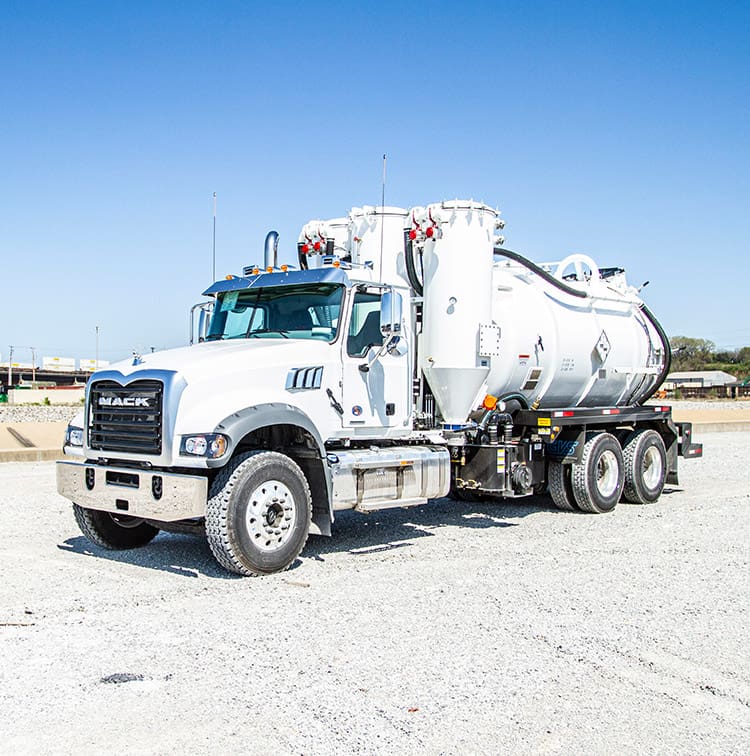

If you’re reading this article, you likely already know what vacuum trucks do: pneumatically suck liquids, sludges, or slurries (often from underground locations) into a tanker receptacle to be hauled off for disposal at another location.
The objective is simple enough when dealing with materials that do not require special handling. But when this application involves material that’s labelled “hazardous” or has risk potential in case of contact or spillage, the equipment has to meet a certain set of requirements.
Coded/DOT trucks are equipment that meets these needs.


THE DIFFERENCE BETWEEN NON-CODE AND CODED VACUUM TRUCKS
Non-Code: These vacs do the majority of suck-and-haul jobs in various industry applications. The material they are handling is ordinary, so it’s up to manufacturers to design safe and efficient equipment for end-users who will buy or rent them. No outside agency is involved in mandating extra safety codes beyond what is standard.
Code: Unlike non-coded vacs, coded/DOT ones have a very special task. They remove materials that are considered to be potentially hazardous by the U.S. Environmental Protection Agency (EPA) and are typically found in carefully moderated applications, like oilfield operations. The tank of a code compliant truck is built to standards detailed by the American Society of Mechanical Engineers (ASME). The builder must also be a certified member of the organization.
The manufacturing facility itself is inspected to ascertain its pressure and vacuum equipment building capacities, and quality control protocols are approved before tanks are built to ASME code.
The building process itself involves a stringent set of checks and balances. But at the end of the day, the code/DOT vacuum trucks that roll out of the manufacturing facility are designed to offer maximum safety in the event of an accident.
In order to get a more detailed picture of Coded/DOT vac trucks, we spoke to Paul Brouwers, who specializes in this product line at Custom Truck One Source, USA’s premier one-stop dealership of heavy equipment solutions.
Excerpts from the interview:
What are Code/DOT tanks?
A Coded/DOT tank has code regulations regarding roll-over protection, burn relief, automatic valves, etc. So, if such a truck were to crash, even if the tank completely separated from the vehicle, it has safety features in place that are going to keep the valves protected and make sure that spillage and other fallouts are as minimal as possible.
Who are the market leaders for this equipment?
I would say Global Vac Systems, Cusco, Presvac, and Federal Signal.
Are there different types of Coded/DOT vac trucks?
Yes. There is what the industry calls `liquid vac’. What we primarily sell at Custom Truck is the largest fleet of liquid vacs in North America. Though there are others, like 80-barrel liquid vacs and 90-barrel liquid vacs, the most common ones you will see in use are the 70-barrels.
They have a small, rotary vane pump on them. Typically used in petrochemical and refinery pipeline applications, they create very little suction – just enough to put material into the tank. And they can also power offload.
Then there are units that are similar, but just a little bit bigger than these in tank size. They have bigger blowers and bigger vacuums on them so they can pump more of a sludge.
“Industry vacuum loaders” are yet another category, which can either come coded or non-coded. These have separate filtration systems in them that can handle dry material. They have multiple bags that actually filter the stuff out so you can vac wet or dry.
Multiple configurations are of course possible, but these are the three most common varieties you will encounter.
What are the advantages of owning a Code/DOT vacuum truck? Or is it just a necessity?
It is a necessity, and it’s application based. If you’re not vacuuming potentially hazardous material, you will not be needing one.
How does Custom Truck One Source support Code/DOT vac customers?
It’s a specialized market. Therefore, it is an educated market. Buyers typically know what they want. But we walk them through the process of making an informed purchase decision, nonetheless.
Sometimes, they may think they need a stainless steel tank that costs a lot of money, and it turns out they don’t. Or they think they need a lot of blower or a lot of vacuum power, but they really don’t.
We focus a lot on application and try to fully understand how a customer intends to use a unit. That helps us give them practical input to make the most sensible decision.

Another bit of jargon you will come across when dealing with DOT cargo tanks is “spec” vs “non-spec.”
Spec or specification tanks undergo strict manufacturing, testing, and maintenance protocols to meet DOT standards. They are tasked to carry chemicals and liquids that are potentially hazardous. You may often hear the term `specification cargo tanks’ being used interchangeably with `code tankers’.
Common specification cargo tanks include the DOT406 (for petroleum products), the DOT412 (for acids and corrosives), and the DOT407 (for general chemical products). There are some others as well, such as the MC331 (for compressed gases like propane) and the MC338 tanker (for cryogenic liquids).
These are not subject to DOT regulations, though you will find that they resemble DOT406 tankers. Non-specs are generally used for material in the non-hazardous category like wastewater. However, some do carry diesel fuel in the United States.